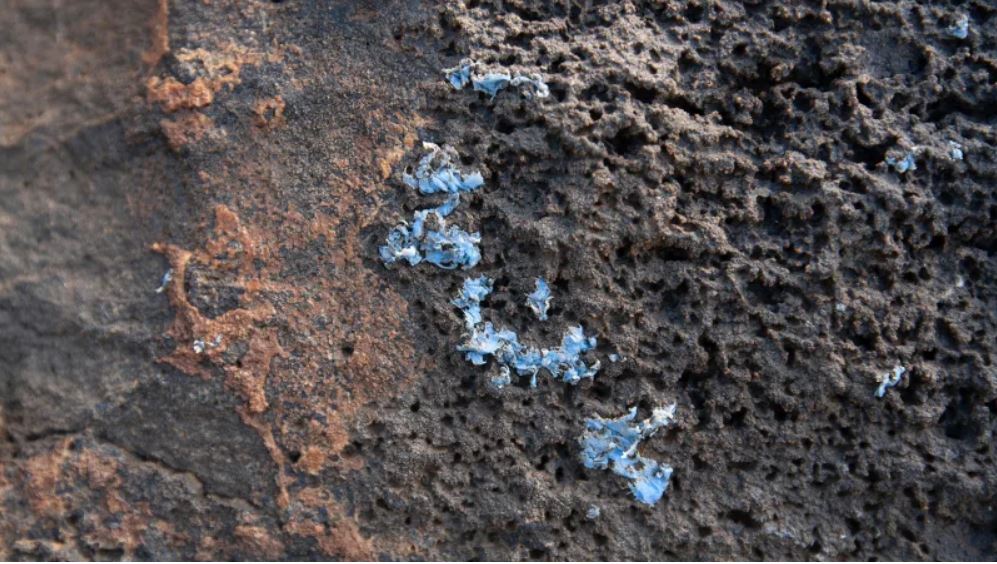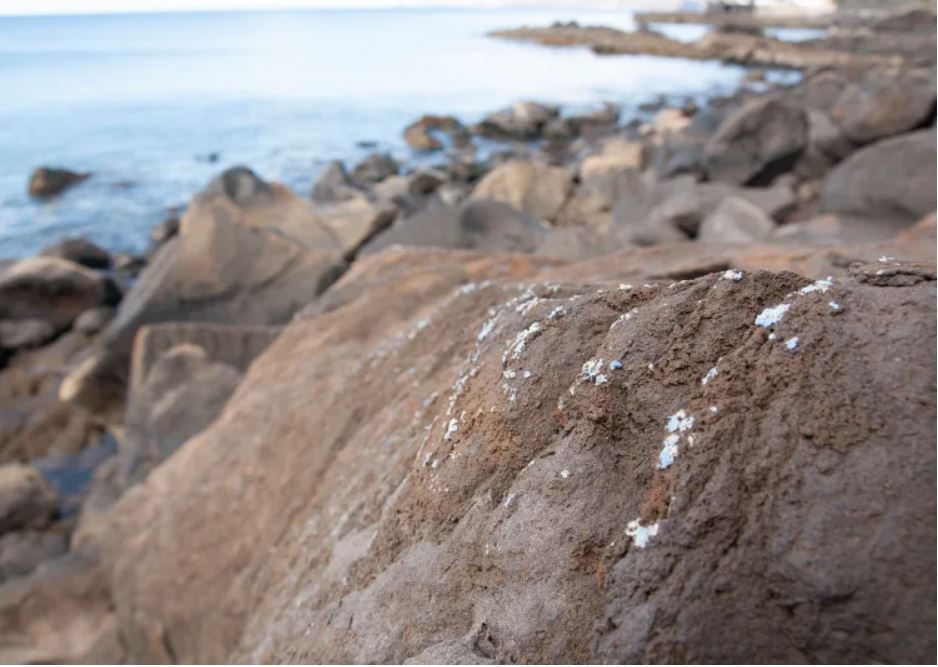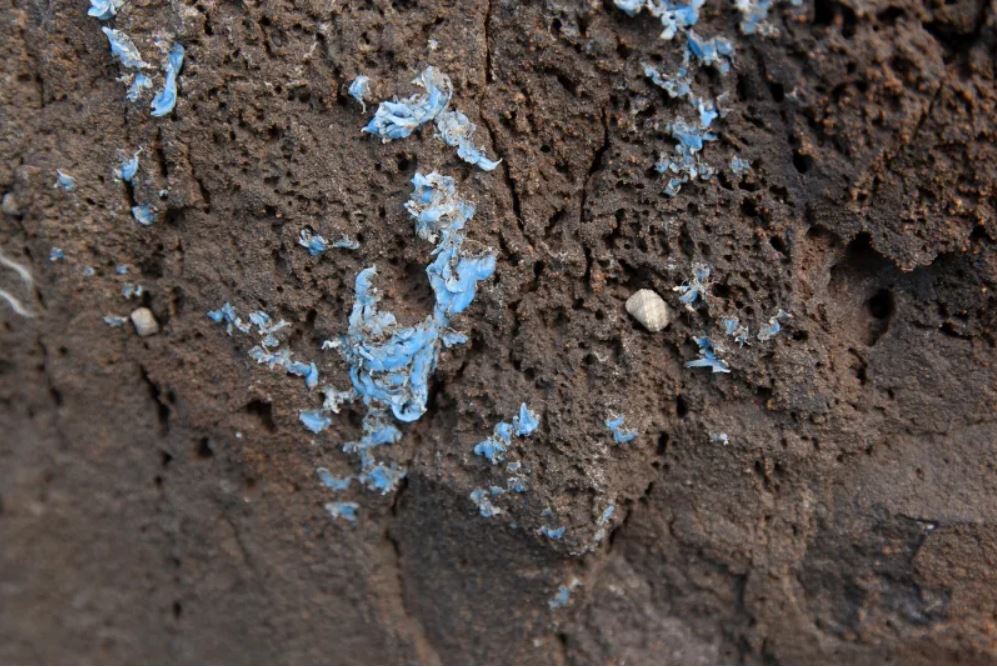If you go to the beach, you’re likely to see some form of plastic pollution scattered in the waves or sprinkled among the sand grains.
But researchers have identified a new, and perhaps more permanent type of plastic pollution: “plasticrust,” a veneer of plastic encrusted right onto wave-licked rocks.

Ignacio Gestoso, a marine ecologist at the MARE-Marine and Environmental Research Center on the Portugese island of Madeira, first noticed the strange crusts on the volcanic island’s shoreline rocks in 2016.
The light blue films were plastered onto the rock like old chewing gum grafted onto a sidewalk. Gestoso and his colleagues took some photos and quick samples, but figured the sighting was a one-off. The next year, same thing… and the crusts were still there.
Early this year, more area was found to be covered in the mysterious substance, now in multiple colors. By randomly sampling rocky areas of the shoreline, the researchers found that over three years, the crusts had gone from a single sighting to covering nearly 10 percent of the rocks’ surfaces.
Chemical analysis of the stuff revealed that it was polyethylene, an extremely common plastic often used in single-use packaging and food containers.
Plasticrusts
The researchers formally dubbed this never-before-seen form of plastic pollution as plasticrust in a new paper released this month.
Tragically, it’s not even the first type of totally new material our species has birthed into the natural environment with our plastic pollution. Six years ago, researchers found an unholy merger of plastic and rock on a Hawaiian beach, the result of campfires melting plastic waste and bonding it with sand and pebbles. Gestoso thinks plasticrust was forged by water, not fire.

“The crusts likely originated by the crash of large pieces of plastic against the rocky shore, resulting in plastic crusting the rock in a similar way algae or lichens do,” Gestoso told Earther.
A plastified ecosystem
But plasticrust may have more immediate impacts. On Madeira, the plasticrust is gradually replacing natural biological crusts and films on the rocks — surfaces that intertidal animals like barnacles and snails adhere to and feed from. Gestoso’s team found that an algae-eating species of winkle sea snail was nearly as abundant on the plasticrusts as it was on normal surfaces, suggesting that the mollusks might not avoid plasticrusts, but graze on the algae that settle right on top. That raises the possibility that they’re ingesting some of the plastic in the process.
Gestoso says future studies should figure out just how much plastic the grazing snails are taking up to evaluate the potential risk plasticrusts pose. He also says he and his team are planning to conduct comprehensive field surveys for plasticrusts in the region to get an idea of where the stuff is accumulating.
Gestoso hopes that the plasticrust’s discovery can contribute to awareness about the consequences of plastic waste, as unsettling as the news is.

It’s not yet known if plasticrust has the potential to be a widespread phenomenon, but figuring out exactly how plasticrust is generated – and from what raw materials—would be paramount to determining its importance to the marine environment, says Gestoso.
Plasticrust and plastiglomerate are sobering reminders of the unyielding permanence of plastic pollution. Plastics have become so ubiquitous on this planet that they will likely generate an obvious fingerprint of humanity in the fossil record for many tens of millions of years. Long after our species is gone, these “technofossils” may remain in the strata.












white people’s plastic trash not all humans. whites did it and no one else. stop lumping all of humanity into one group when talking about crimes against nature and humanity. ONLY WHITES DID IT!!!!!!!